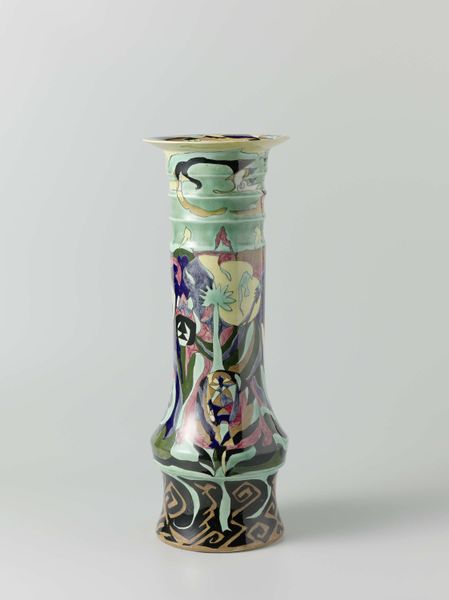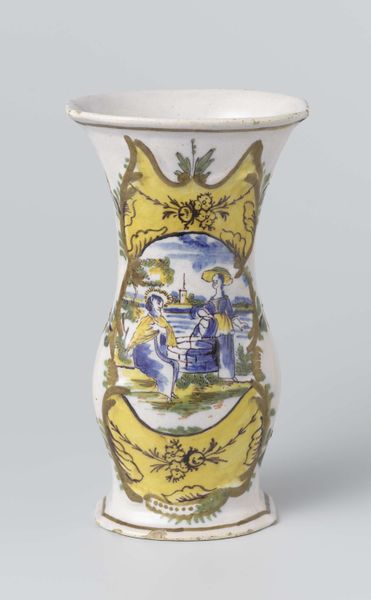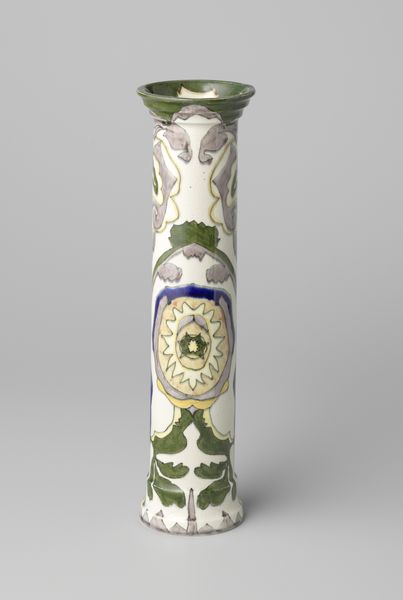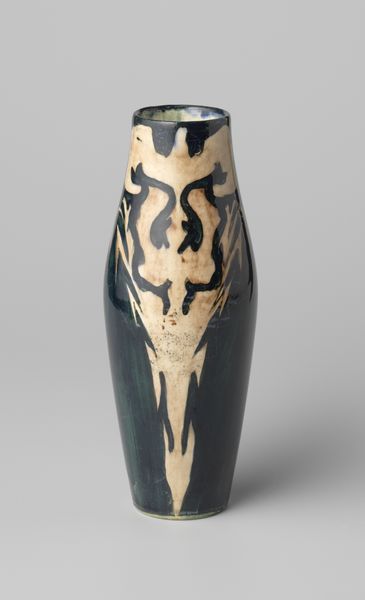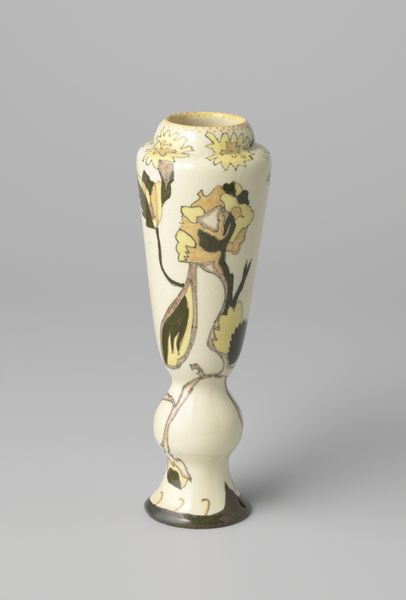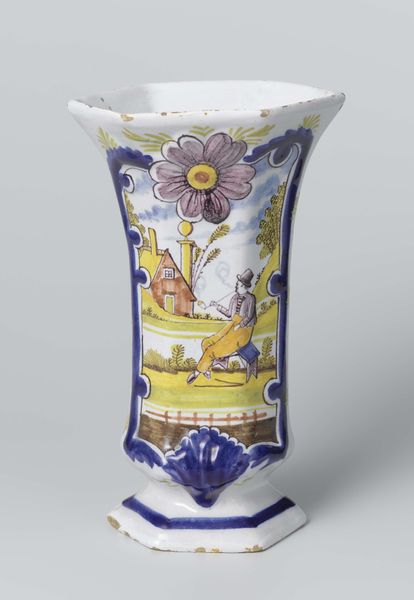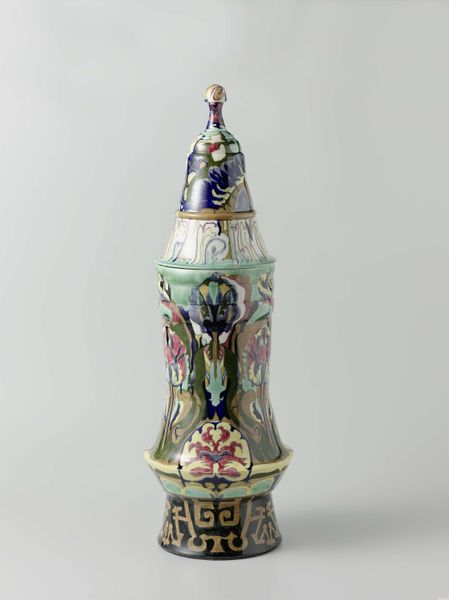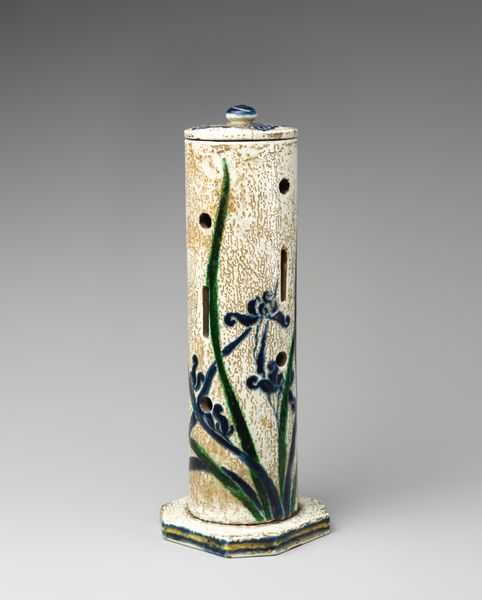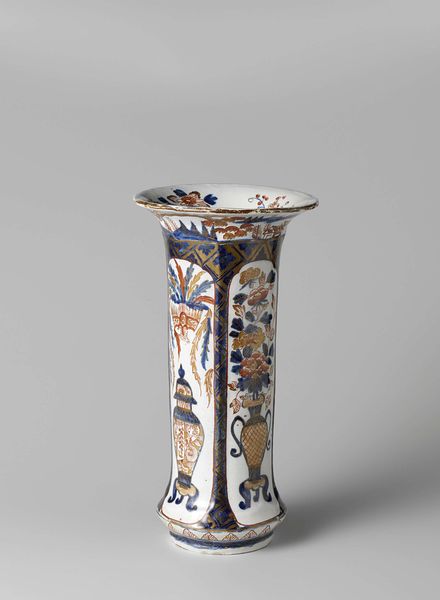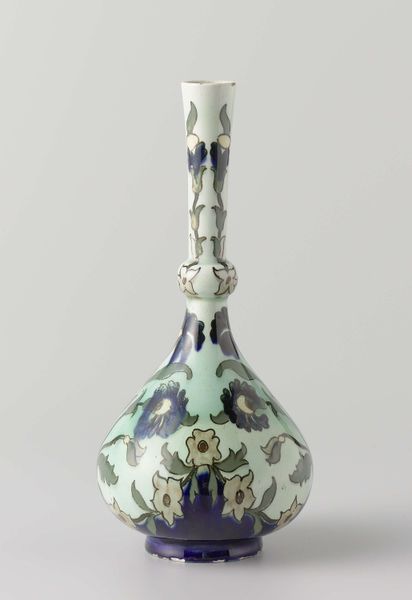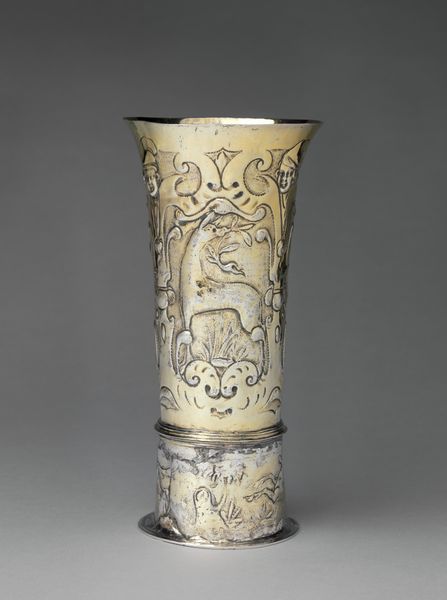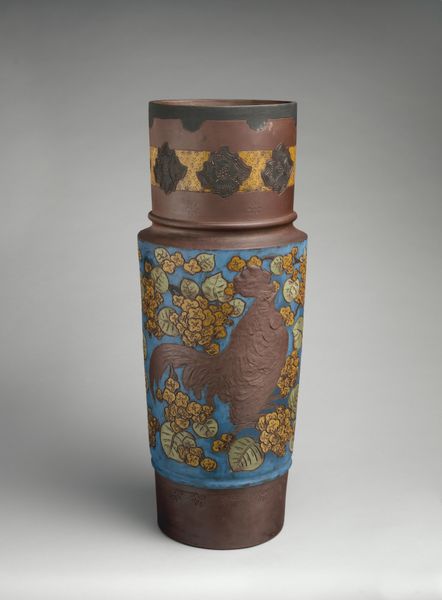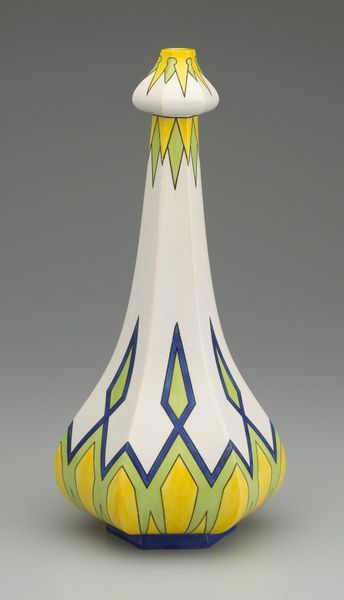
Vaas van aardewerk, veelkleurig beschilderd met gestileerde plantmotieven 1905
0:00
0:00
mixed-media, ceramic, earthenware
#
mixed-media
#
art-nouveau
#
ceramic
#
earthenware
#
decorative-art
Dimensions: height 43.6 cm, width 15.8 cm
Copyright: Rijks Museum: Open Domain
Curator: Well, here we have a fascinating piece titled "Vaas van aardewerk, veelkleurig beschilderd met gestileerde plantmotieven"—a vase crafted around 1905 by N.V. Haagsche Plateelfabriek Rozenburg. It is of mixed media construction using ceramic and earthenware techniques. My first impression is...eclectic! So many colors and seemingly clashing styles. Editor: Clashing? I see a vibrant attempt at harmonizing natural motifs with geometric forms! It immediately strikes me as a bold statement against the industrial age, clinging to the beauty of the organic through its floral depictions, but with this assertive geometrical frame for the painting. Curator: Ah, I can appreciate that read. What jumps out at me are these almost totemic, abstracted shapes. They look like stylized faces emerging from a jungle of foliage. It gives the vase a presence that transcends mere decoration, carrying with it a sense of ancient ritual, you might say. The geometric abstractions around the base act as symbolic anchors. Editor: Indeed! Rozenburg, I would say, tapped into a yearning for meaning amidst the anxieties of early 20th-century Europe. Notice how the botanical elements are stylized—not realistically rendered—becoming symbols themselves. Perhaps reflections of Art Nouveau's quest for integrating art into daily life but with strong references to traditional patterns from cultures near and far. It raises questions about colonialism, cultural appropriation, and the European gaze, too, because a work like this can, in a sense, flatten lived cultures onto single decorative works. Curator: A poignant critique. However, I wonder if it also indicates something more universal—the urge to locate the familiar, almost divine, amidst the natural world. It is, after all, the stylized patterns—those so-called appropriated designs—that bring this idea together for the maker. How this Rozenburg vase merges different world-views in such an overt, artistic expression of nature. What will this symbol of nature mean in the coming 21st Century? Editor: I concur—art allows such dialogues to happen. The clashing and coming together are key in art objects such as these. For me, seeing its message reframed again by someone in another time is part of the art piece. The discourse completes the work. Curator: Exactly, this vase shows us, in color and form, how those continuities and contestations create our culture—one vessel at a time.
Comments
No comments
Be the first to comment and join the conversation on the ultimate creative platform.
